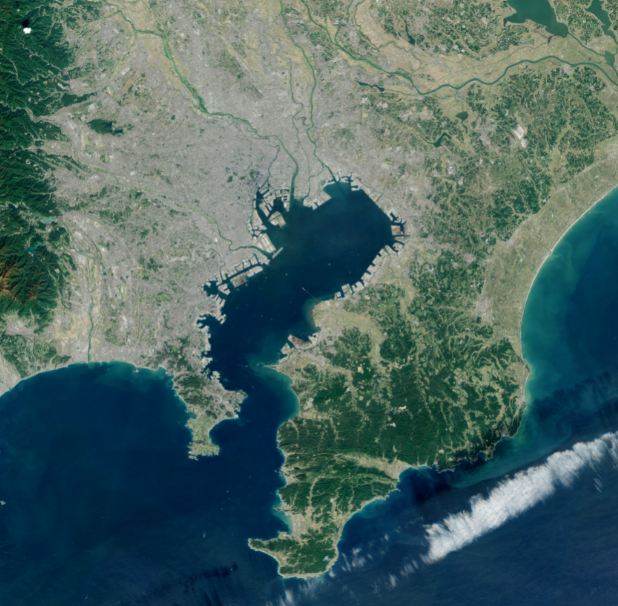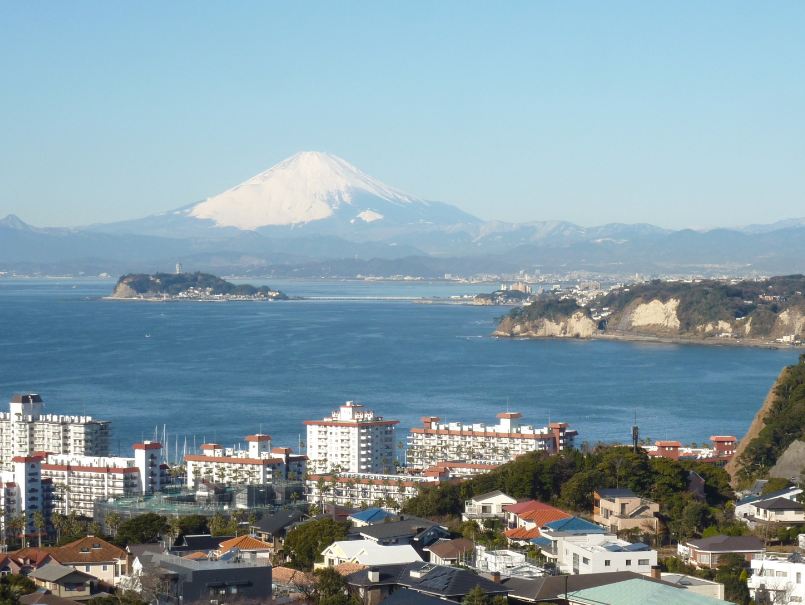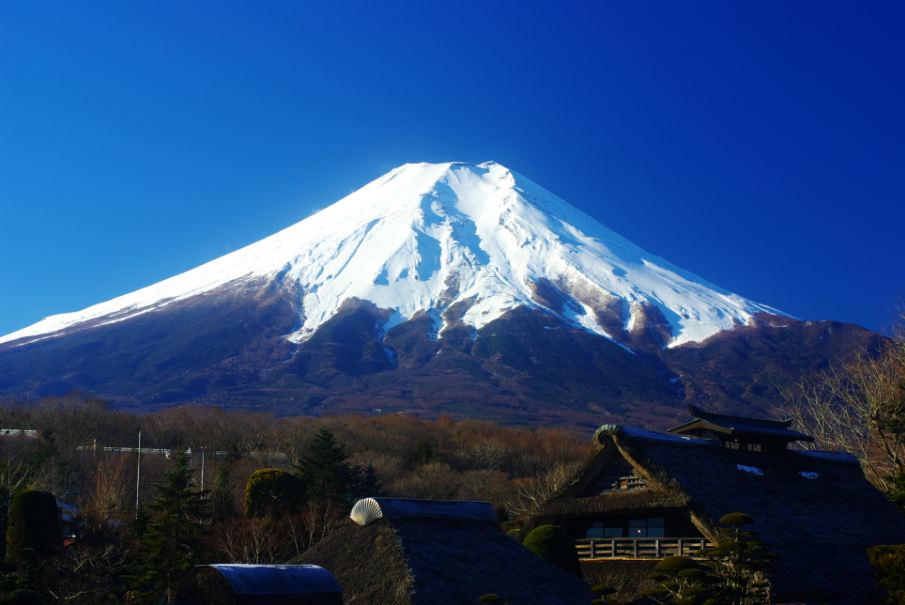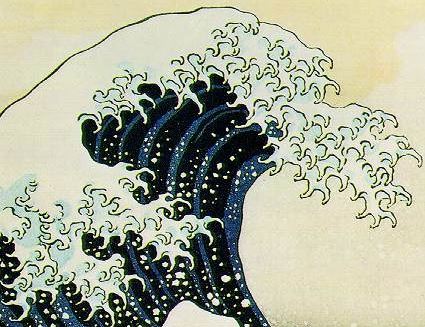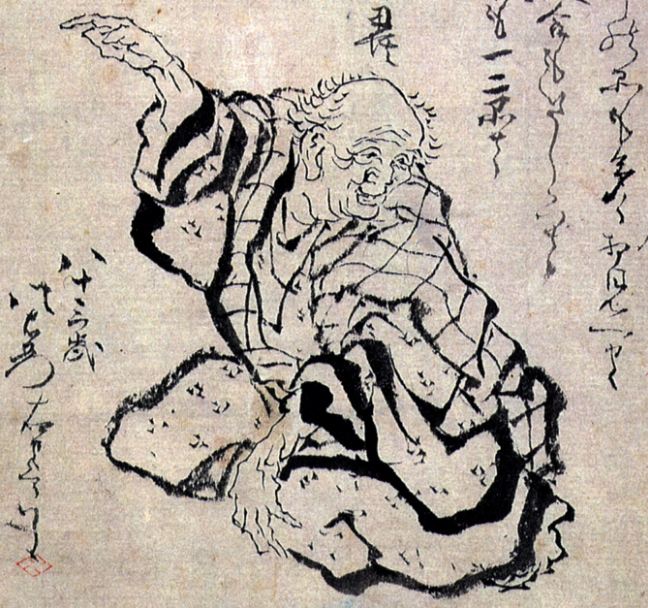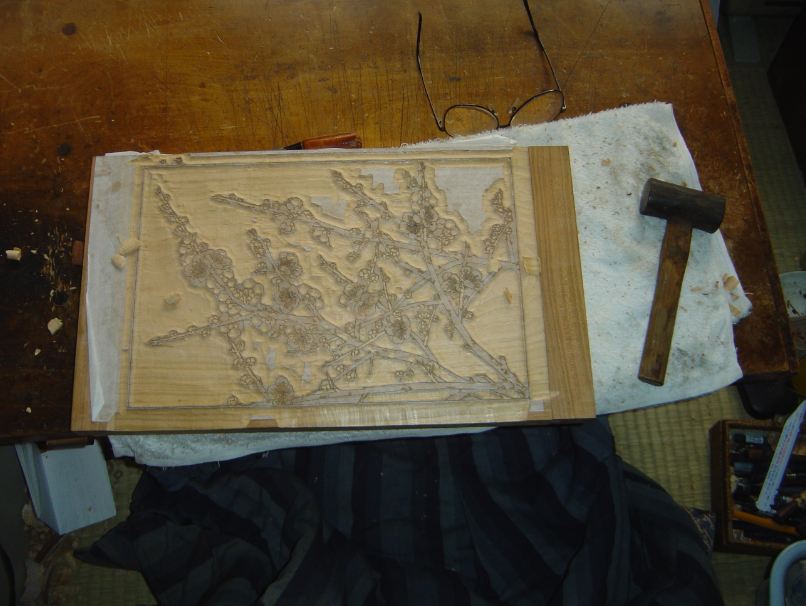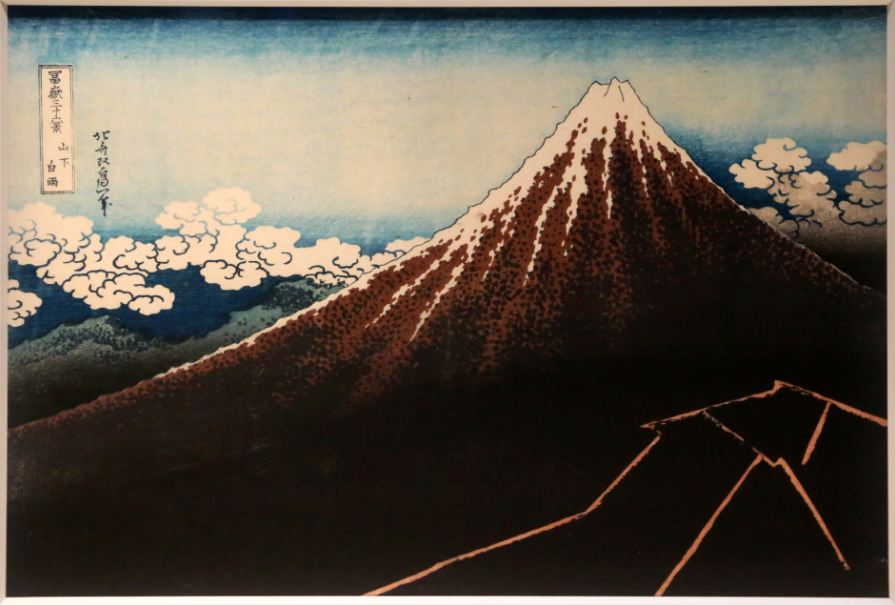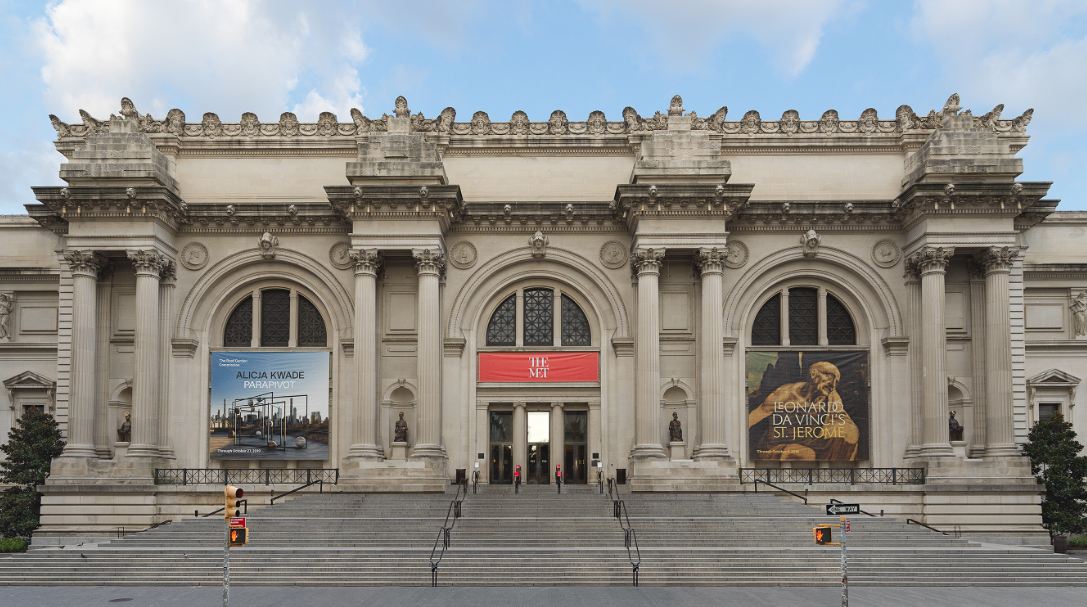The great wave of Kanagawa, referred to as the Great Wave, is a woodblock print created by the famous Japanese woodblock printmaker, book illustrator, and artist Katsushika Hokusai during the Edo period (1603-1868 AD). It was the final era of traditional Japanese Government, culture, and society before the country got propelled into the modern era.
Here are also the Top 7 Japan Travel Tips for Your First Time in Japan.
Origin
Between 1830-1833, Hokusai created this painting as the first piece of a series of woodblock prints called Thirty-six Views of Mount Fuji. A series of ukiyo-e prints that depicted Japan’s tallest peak from different views. It is a multicolored woodblock print made of color and ink that is approximately 10*14 inches. Hokusai was a master in composition who incorporated geometric shapes into his paintings to attract the viewer’s attention. Here, the image depicts a tremendous wave threatening three boats off the Coast in Sagami Bay, followed by Mount Fuji rising in the background.
This painting is full of visual play. The observance shows that the massive cresting wave is pictured minutes before crashing down onto the three fishing boats below. Furthermore, the little peak appears to be being devoured by the waves.
Hokusai has organized the composition in which the observer’s eye is drawn immediately to the mountain top peaks. Across the thirty-six prints that constitute series, triangular and circular series. Parallel series also got utilized consistently to create visual dynamics, to vary his representation of the Fuji. It got painted by the artist towards the end of his life. When he was in full command of his skills, influenced by some western techniques and ideas showcased in the prints.
Description
This print is a Yoko-e, a landscape format printed to the ban approximately 25 cm (10 in) height by 37 cm (15 in) wide.
Three main parts make up the composition: a storm-tossed sea, three boats, and a mountain. The signature is in the upper left-hand corner.
Boats
The picture shows three oshiokuri-bune speed boats in the scene. They are used to transport live fish from the Izu and Bs peninsulas to the Edo Bay markets.
The boats are in Kanagawa prefecture, with Tokyo to the northeast. Mount Fuji to the west-northwest, and the bay of Sagami to the north-northwest. Finally, the bay of Tokyo to the east, as indicated by the title.
The boats look stationed west of the Miura peninsula. They have angled south-southeast, are making their way back to the capital, located around the Miura peninsula. Eight rowers are clutching to their oars in each boat. In the front of each boat, there are two more people. Count the total number of human figures in the photograph to thirty. However, just 22 people are pictured. Using the boats as a guide, one can estimate the magnitude of the wave: the oshiokuri-bune were typically between 12 and 15 meters (39–49 feet) long, and given Hokusai’s 30 percent vertical scale stretch, the wave must be between 10 and 12 meters (33–39 feet) height.
The Mountain
Mount Fuji is a snow-capped peak in Japan. It is considered a sacred location, as well as a symbol of national identity and beauty.
As seen in views of Mount Fuji, which opens with the current scene, Mount Fuji is an iconic figure in many Japanese renderings of notable locales. The dark tint surrounding Mount Fuji suggests that the image was taken early in the morning, with the sun rising behind the spectator and showing the snowy crest of the snow. While cumulonimbus storm clouds appear to hang in the sky between the spectator and Mount Fuji, there is no rain in the foreground landscape or on Mount Fuji itself, which looks clear.
Read here for some tips if you are just a first-timer hiker.
Sea And Waves
As an extended wave about to break, the sea dominates the composition.
The wave creates a circle around the center of the pattern in this photograph, framing Mount Fuji in the backdrop.
It was described by Edmond de Goncourt as follows:
The wave painting is a deification of the sea created by a painter who lived with the religious terror of the vast ocean that encircled his land.
He is amazed by the sudden ferocity of the ocean as it leaps toward the sky, by the deep blue of the curve’s inner side, and by the splash of its claw-like peak as it sprays raindrops.
Hokusai
Changing names was a common practice in those times. However, the Japanese artist, ukiyo-e-painter, and printmaker took the tradition way further by awarding himself a pseudonym every few years, ultimately adopting more than thirty names in his career.
Hokusai started displaying artistic talent from the young age of six years old. Later, as he turned twelve, he started working in a bookstore. By the age of sixteen, he got apprenticed as an engraver.He spent around three years learning the trade, the knowledge, and the skills that later got incorporated into his talent. It helped him to create some of his illustrations and the most famous works.
At the age of nineteen, He became part of the ukiyo-e Artist Katsukawa Shunsho and embarked on what turned out to be a lifetime career in arts. In his early career, Hokusai designed dioramas and made them as toys for kids. He even made board games that featured small landscape designs. These works mark the start of his journey towards the many distinctive landscape compositions he created, still famous today. Between 1814-19, Hokusai drew a series of images for aspiring youth to copy that got compiled into a best-selling book titled Hokusai Manga and document one of the earliest forms of Manga art.
Technique
In Japanese woodblock printing, the final preparatory sketch is sent to a block carver who attaches the thin paper to a block of wood and carefully carves it away to form a relief of the lines of the image. In this process, the drawing gets light. Then, with all the necessary blocks, sushi, or printer, place the printing paper on each block consecutively and rub the back with a hand-tool known as a barren. This way, many impressions, up to thousands, can be produced before the blocks exist worn out. Due to the nature of the production process, the final result was a collaboration. In which the painter usually did not participate in the production of the prints.
Thirty-six Views of Mount Fuji
In this series produced by Hokusai, he offers glances of Mount Fuji from various vantage points and during different times of the year. The prints of this series are specifically renowned for their rich hues- particularly the blue tones, which Hokusai achieved by his unique multi-block print-making technique.
Legacy
The artwork is in the world’s famous museums. It includes the Metropolitan Museum of Art, the Art Institute of Chicago, the Los Angeles County Museum of Art, and the British Museum. Additionally, the Great Wave has inspired mass works of contemporary art, including a monumental mural in Moscow, an environmental installation in Florida, and even the cat drawings of a Malaysian artist in Paris. Each of these pieces serves as proof of the influence of the Japanese masterpiece.
Bottom Line
The article ensures that you have adequate information to examine the artwork.
Do you want to learn more about historical works of art? Consider the origins of Lady with an Ermine as well.

